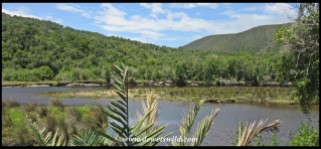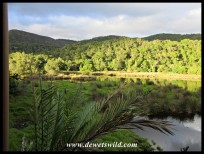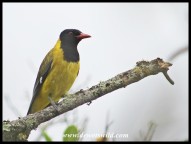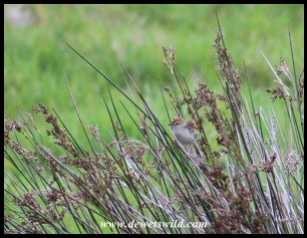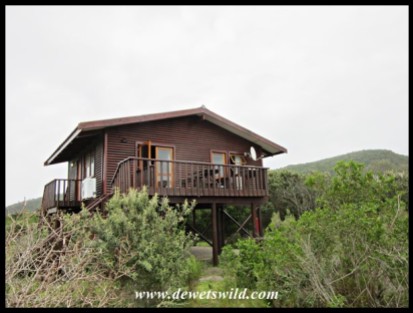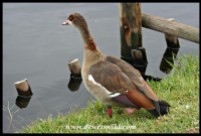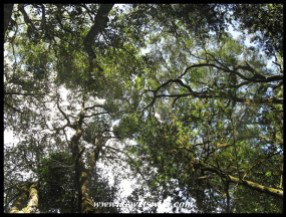When it was proclaimed in 1964, Tsitsikamma was the first marine national park in Africa. Since then it was progressively enlarged as more areas on land and sea was added to the Park, and by the time it was incorporated into the Garden Route National Park alongside Wilderness National Park, Knysna National Lake Area, and extensive tracts of state forests in between in 2009, the Tsitsikamma section covered an 80km stretch of coastline, extending on average 5km out to sea.

The name “Tsitsikamma” is a Khoekhoen word meaning “place of much water”, which is very apt as the region receives on average around 1,200mm of rain annually. This is a rugged but exceptionally beautiful area, with forested slopes, shear cliffs tumbling into the sea, deep ravines cut into the mountains by dark rivers over millennia, and enormous waves pounding unrelentingly onto the rocky shore.
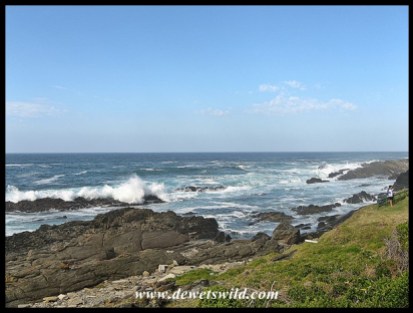
Tsitsikamma coast

Tsitsikamma coast, Garden Route National Park

Tsitsikamma coast

Tsitsikamma coast

Tsitsikamma coast
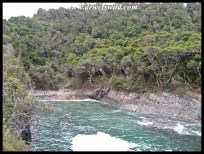
Tsitsikamma coast

Forest creepers

Tsitsikamma coast

Forest stream

Sourfig Flower

Tiny greenery among the rugged rocks

Thunderous breakers

Thunderous breakers

Tsitsikamma Sunset

Storms River Mouth
The easy trail leading to the suspension bridges at the river mouth, about a kilometre from Storms River Mouth Rest Camp, the Tsitsikamma’s main tourst facility, really gives the visitor an excellent introduction to the Tsitsikamma-area; bringing you into contact with the beach, ocean, forest and river, and many of the creatures that find a home there.

The Mouth Trail at Storms River Mouth in Tsitsikamma

The Mouth Trail at Storms River Mouth in Tsitsikamma

Suspension Bridges at Storms River Mouth

Suspension Bridges at Storms River Mouth

Suspension Bridges at Storms River Mouth

In deep conversation on the suspension bridge at the Storms River Mouth

Storms River Gorge

Storms River Gorge

Storms River Mouth

Suspension Bridges at Storms River Mouth

Suspension Bridges at Storms River Mouth

Suspension Bridges at Storms River Mouth

Storms River Mouth

Small pool and waterfall in the forest
Notably, Tsitsikamma’s list of recorded mammals is dominated by marine animals rather than the large terrestrial game species normally associated with a national park in Africa. That being said, visitors should count themselves lucky to see one of the seven whale or five dolphin species that ply these waters – we were fortunate to see a pod of Indian Ocean Bottlenose Dolphins in the surf and a handful of Humpback Whales breaching far into the sea. On land however the Chacma Baboons and Rock Dassies are ubiquitous inhabitants of the camp. And with almost 300 bird species recorded, many of which closely associated with the ocean and rocky beaches, the Tsitsikamma section is a birdwatcher’s delight. Most of the Garden Route National Park’s 25 species of snakes are seldomly seen, so we were thrilled to witness an altercation between a deadly venomous Boomslang and Southern Boubou while walking around one morning.

African Oystercatcher

Chacma Baboon on a cliff-face
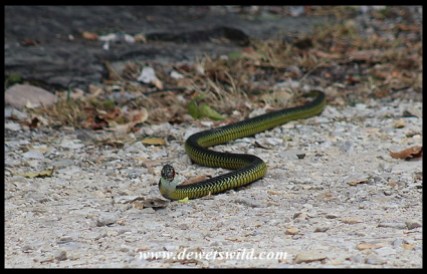
Boomslang

Deadly battle between a Southern Boubou and a Boomslang

Common Sandpiper at a rock pool in the Tsitsikamma

Indian Ocean Bottlenose Dolphin

Forest Canary

Humpback Whale

Delicate damselfly in the forest

Honey Bees harvesting nectar from a sourfig flower

Cape Skimmer Dragonfly in the forest

Kelp Gull

Kelp Gull chick on nest

Knysna Turaco

Lemon Dove

Red-sided Skink

Rock hyrax, or dassie

Rock hyrax, or dassie

Rock hyrax, or dassie

Sombre Greenbul

Speckled mousebird

Swift Terns

Water Thick-knee

White-breasted Cormorant
Walking around after dark, and seeing the healthy population of frogs and toads at Storms River Mouth, we realised how grossly inadequate our old guidebook on South Africa’s amphibians was to identify the 24 species that’s been recorded in the Garden Route National Park. We remedied that soon after we got back home!
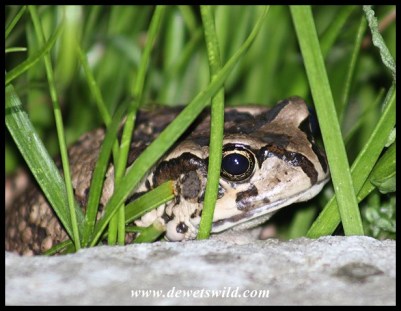
Raucous Toad: Storms River Mouth has an amazing variety of toads and frogs that show themselves after dark

Raucous Toad: Storms River Mouth has an amazing variety of toads and frogs that show themselves after dark

Eastern Leopard Toad: Storms River Mouth has an amazing variety of toads and frogs that show themselves after dark

Raucous Toad: Storms River Mouth has an amazing variety of toads and frogs that show themselves after dark

Raucous Toad: Storms River Mouth has an amazing variety of toads and frogs that show themselves after dark
As already mentioned, Storms River Mouth Rest Camp is the Tsitsikamma section’s main visitors facility and understandably one of the Garden Route’s top attractions. Here, wedged between mountain and sea, overnight visitors have a choice of spectacularly located accommodation and camping sites, serviced by a restaurant and shop that stocks basic food items and curios. There are picnic sites for day visitors and a small swimming beach. Guided boat tours and more adventurous activities up the Storms River gorge can be undertaken daily. Unique snorkeling and scuba trails allow visitors a glimpse into the underwater world of the Tsitsikamma, and on land several walking trails lead deep into the forest. At the eastern side of the Tsitsikamma section lies the more rustic Nature’s Valley Rest Camp, just outside the small holiday town of the same name. The renowned Otter Trail, covering a distance of almost 50km between Storms River Mouth and Nature’s Valley over 5 days, is rated as one of the best and most scenic hiking routes on the planet.

Camping site 50i at Storms River Mouth Camp in Garden Route National Park, December 2017

Camping sites at Storms River Mouth

Some of the accommodation units at Storms River Mouth

Some of the accommodation units at Storms River Mouth

Some of the accommodation units at Storms River Mouth – these are the rustic Forest Huts

The temporary restaurant at Storms River Mouth. The wooden building that housed the restaurant previously burned down and is being rebuilt.
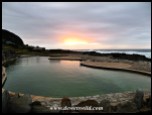
Swimming pool at Storms River Mouth
Storms River Mouth was the sixth destination on our December itinerary through eight of South Africa’s national parks. It is easily accessible along a good tarred road that turns off the N2 highway between Plettenberg Bay and Port Elizabeth.


-34.022947
23.898120



